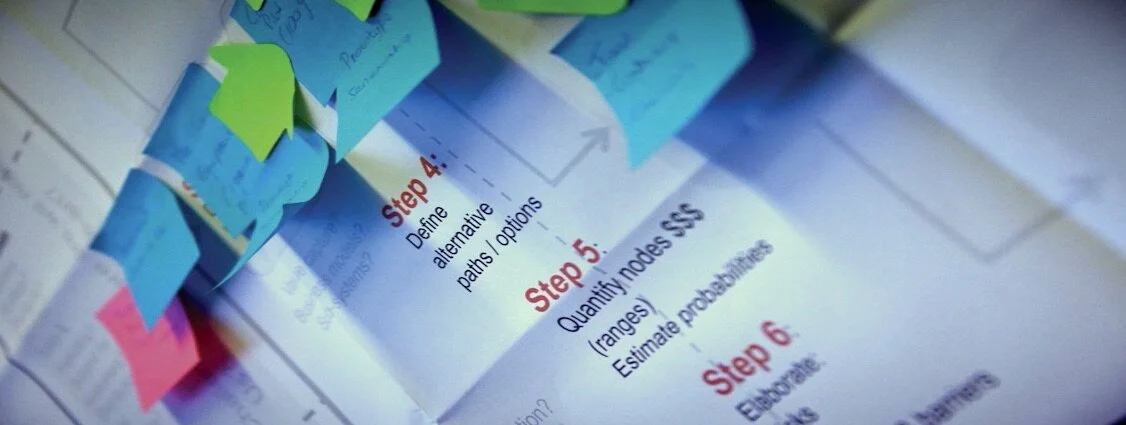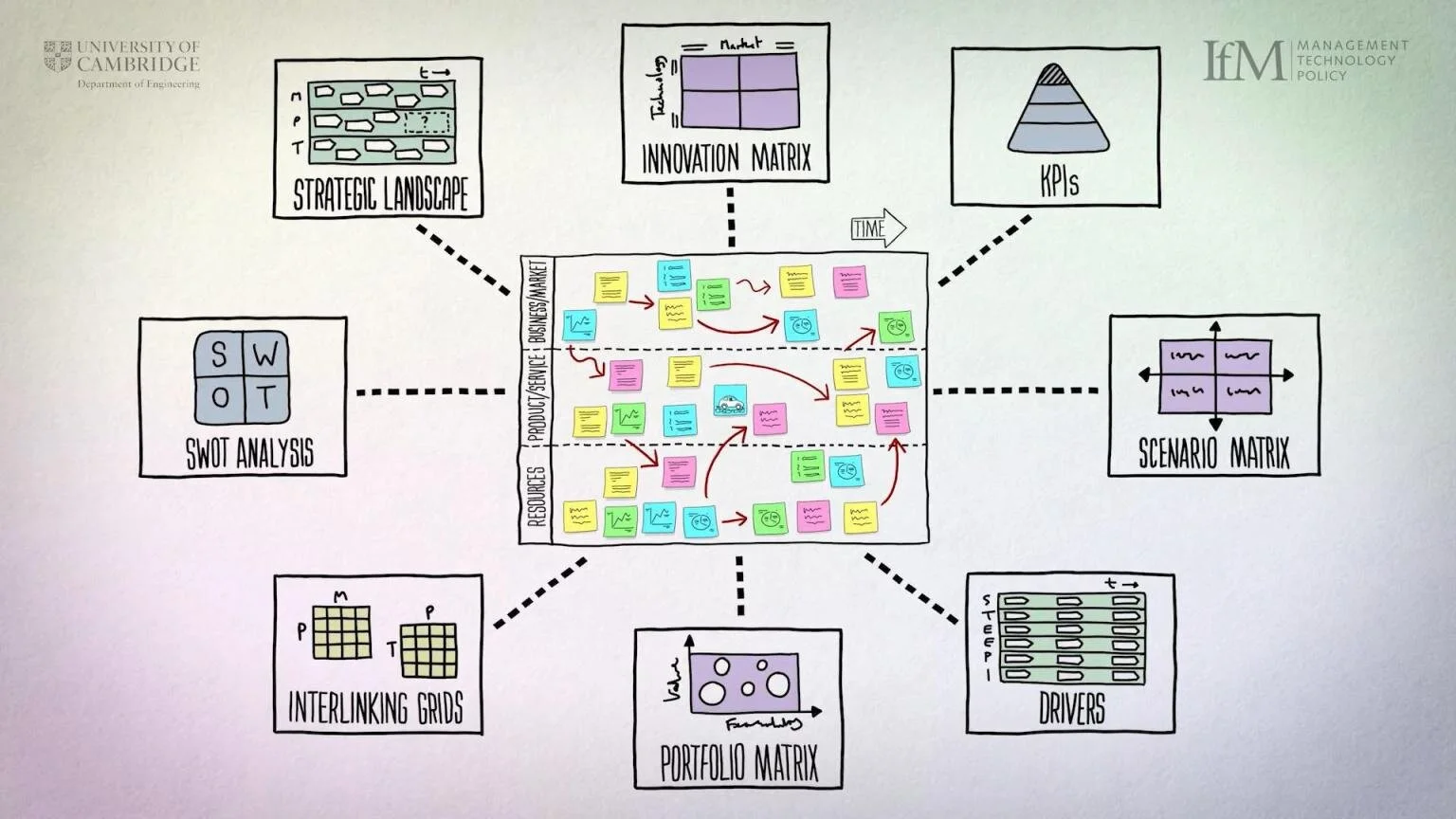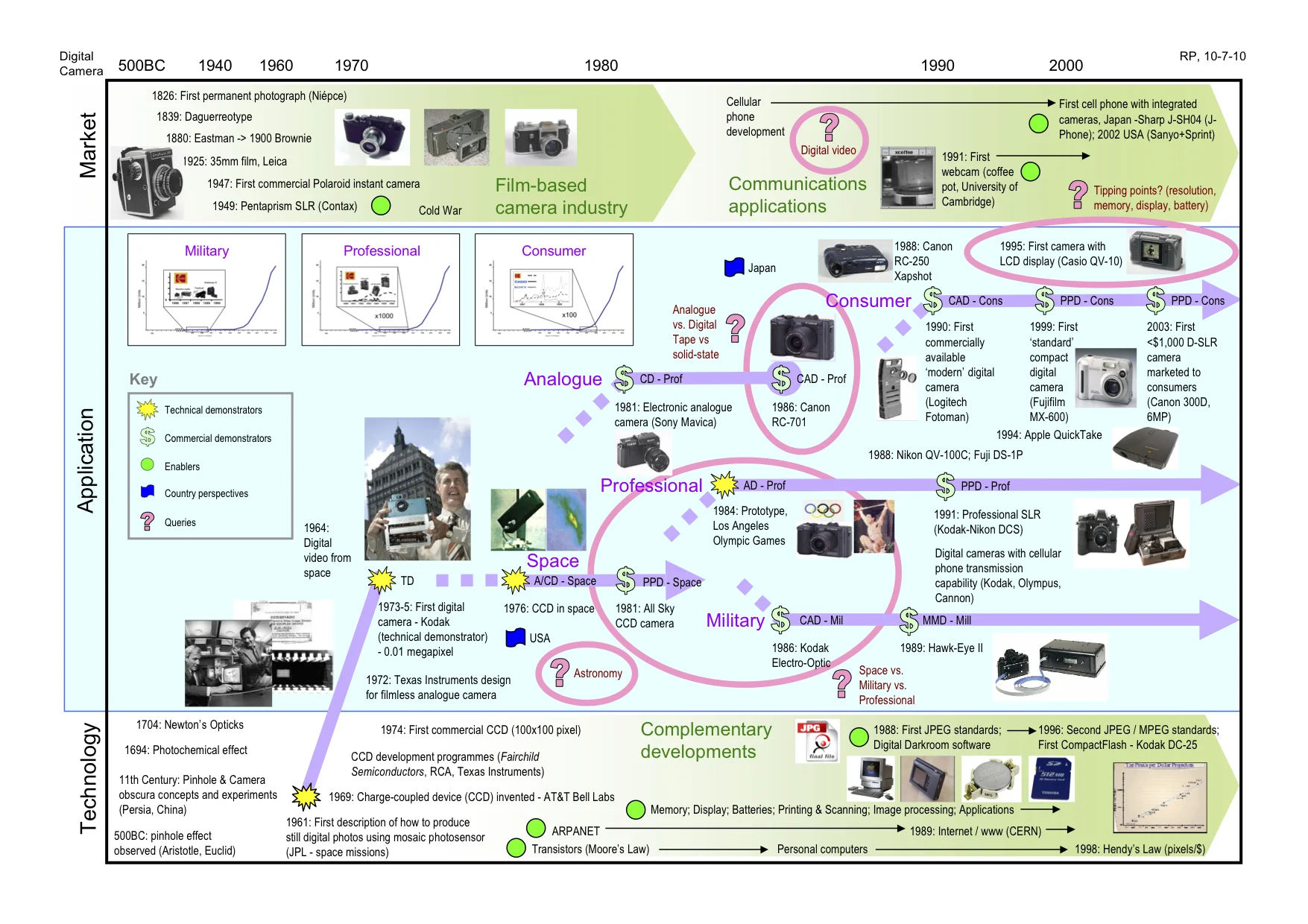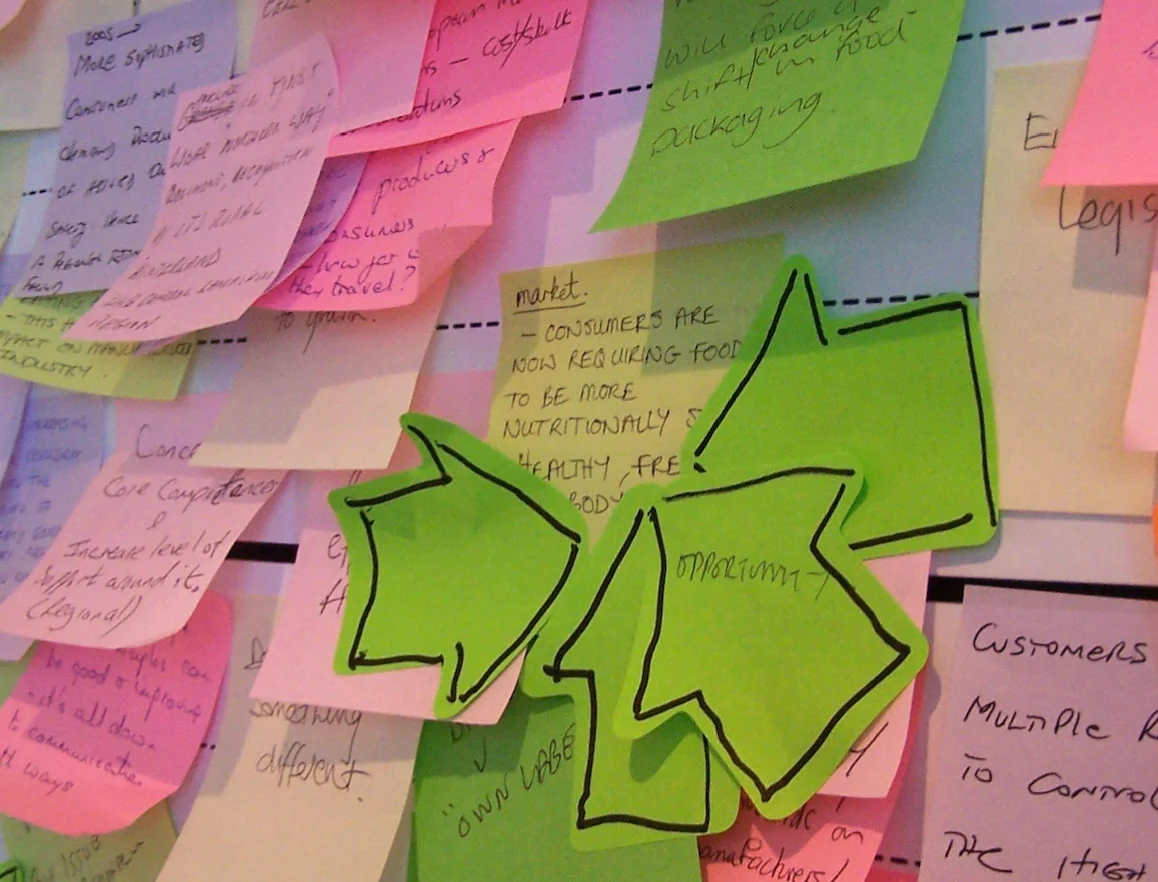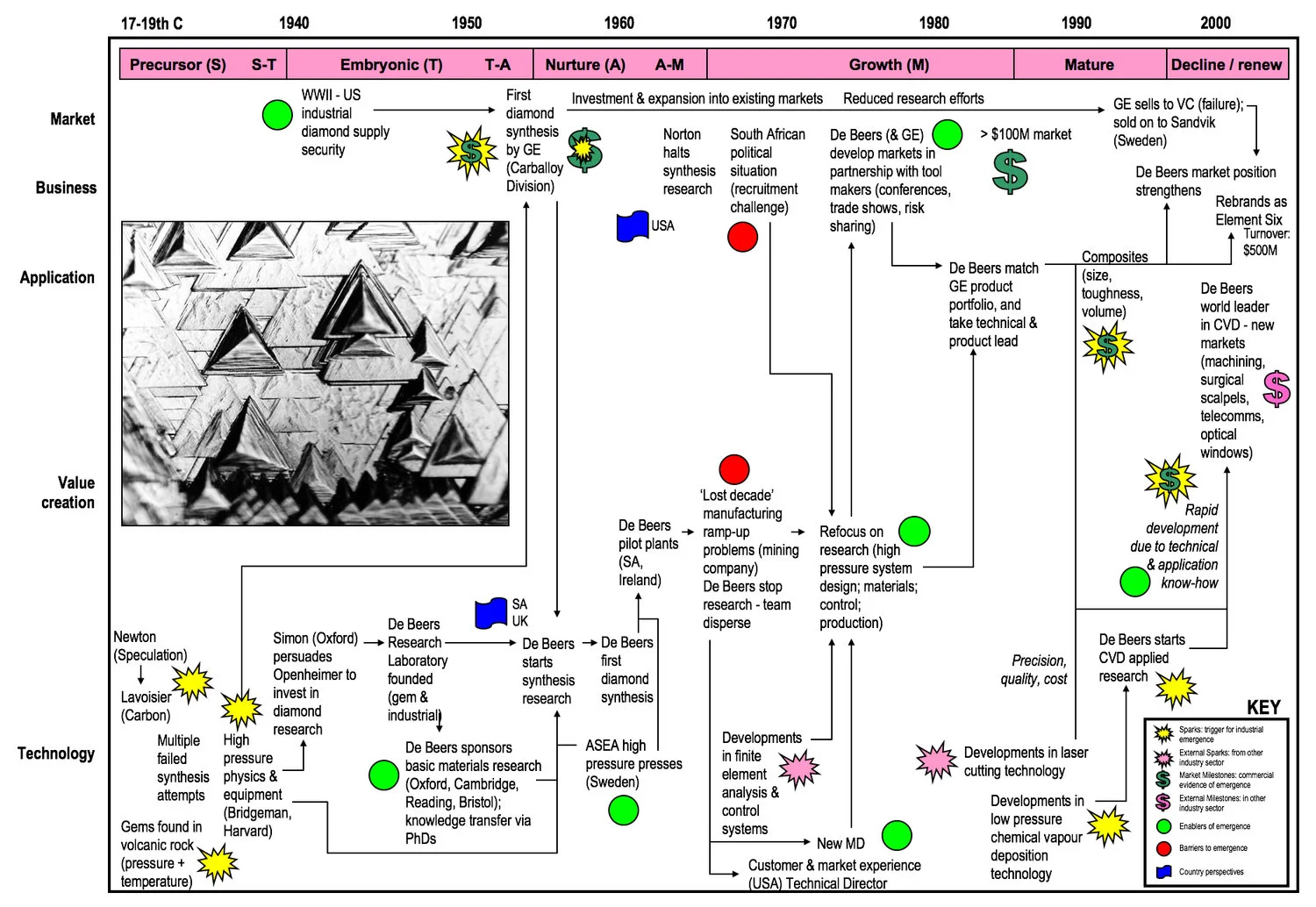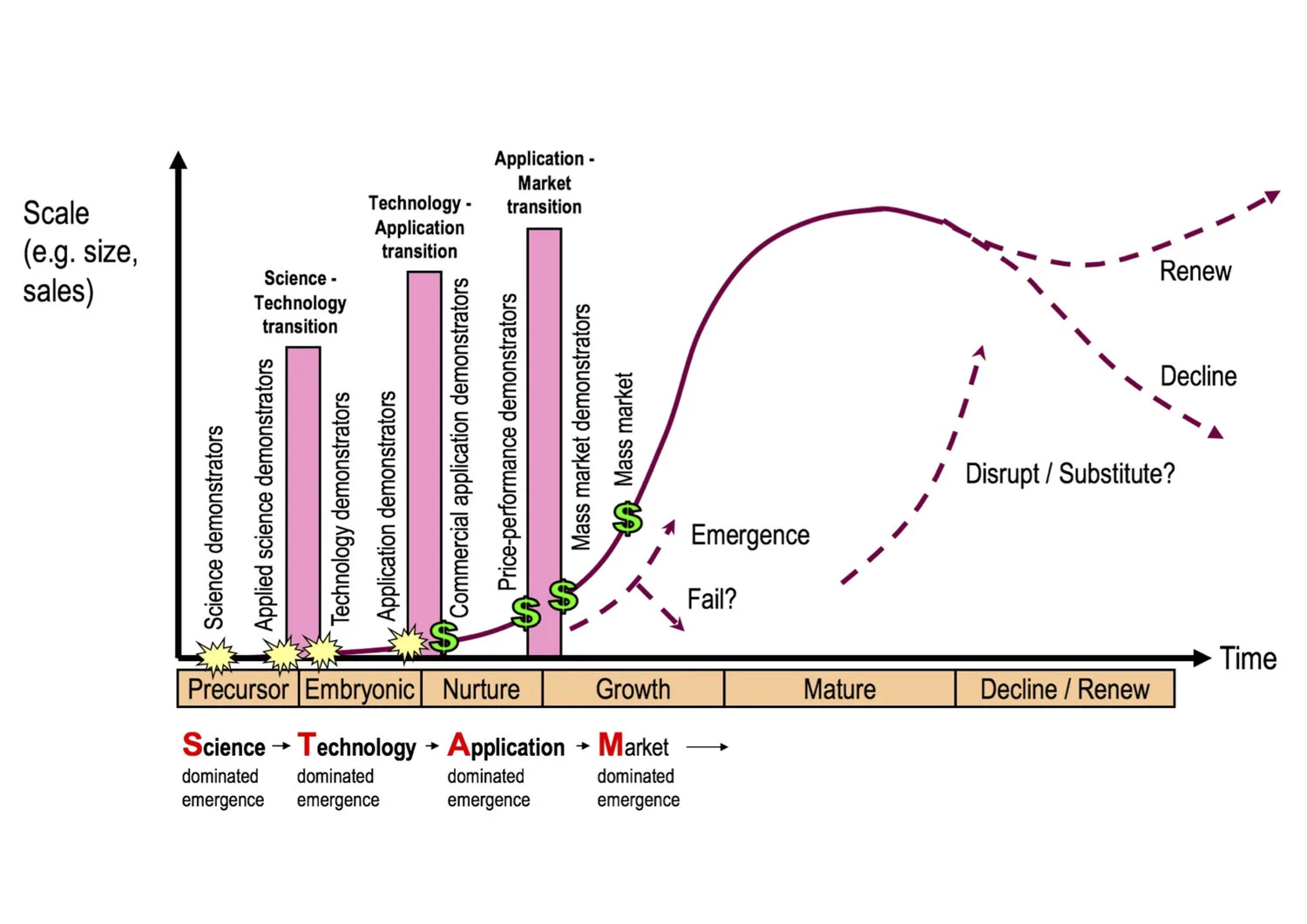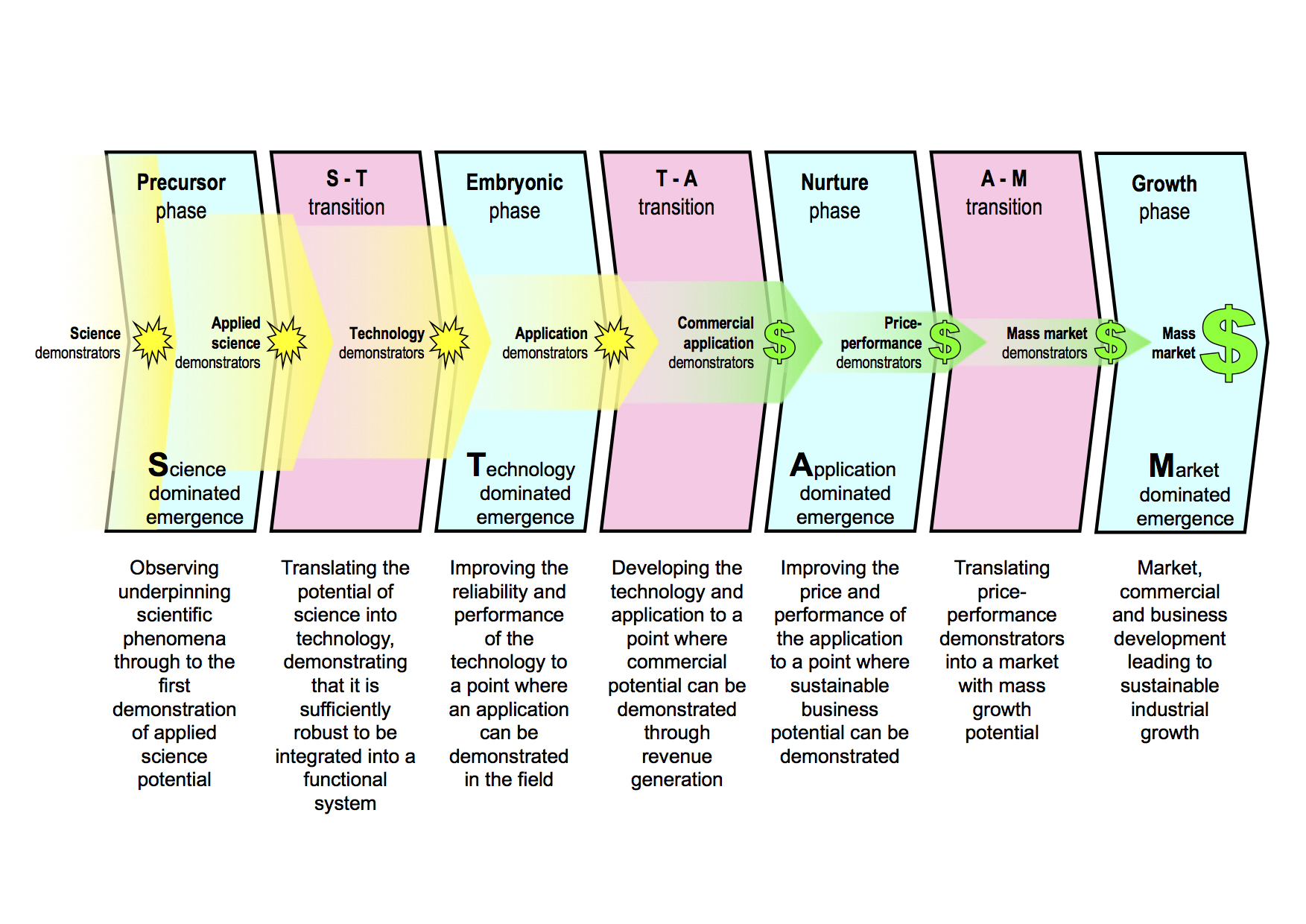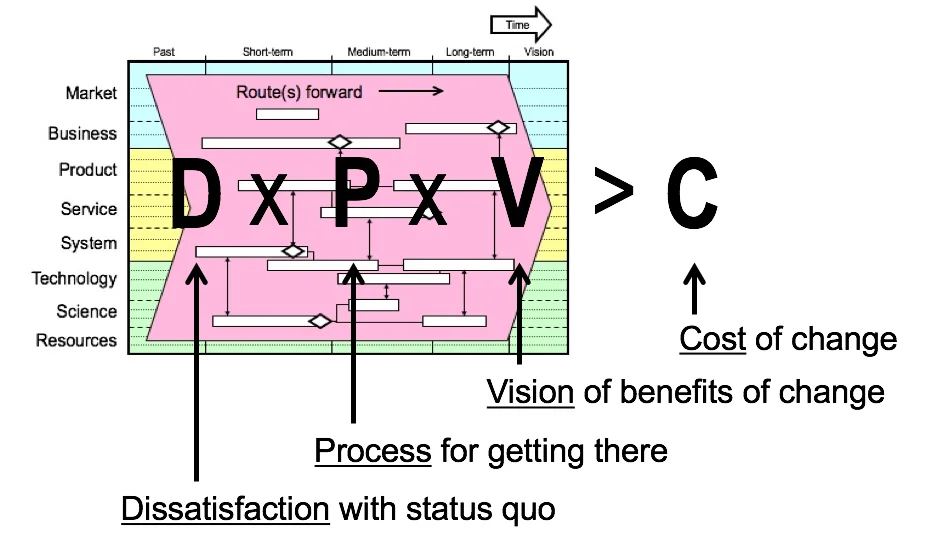News & info
This page includes links to resources, support and newsworthy items.
Worth a look
Some links to useful and interesting resources and perspectives on roadmapping are provided here.
Book announcement
2023 book from Springer: ‘Next generation roadmapping - establishing technology and innovation pathways towards sustainability’, comprising a collection of perspectives on roadmapping (Ed. T.U. Daim, Phaal, R., Meissner, D. and Kerr, C.).
Book announcement
2022 book from Prof Olivier de Weck (Massachusetts Institute of Technology, MIT): ‘Technology roadmapping and development - a quantitative approach to the management of technology’, providing a definitive account of technical analysis for complex engineered systems.
Special issue
2022 IEEE Transactions on Engineering Management journal special issue on roadmapping includes 18 contributions from around the world.
Book announcement
2022 book edited by Prof Tugrul Daim (Portland State University, PSU): ‘Roadmapping Future - technologies, products and services’, comprising contributions from industrially relevant student research projects.
Scenarios and roadmapping
A 2020 working paper discusses the relationship between scenarios and roadmapping, and how to integrate these to methods.
Financing early stage ventures
A 2019 working paper describes a value-oriented roadmapping method, incorporating finance and intellectual property (IP) perspectives.
‘Dot voting’ in roadmapping workshops
A 2019 working paper presents the results of research on rapid prioritisation in roadmapping workshops via ‘dot-voting’.
Webinar
Strategic planning for digital transformation – life in the fast (and slow) lanes, hosted by The Manufacturer, 10 October 2019.
Roadmapping Interest Group (RIG)
The RIG LinkedIn Group is an international forum for knowledge exchange on roadmapping for innovation, foresight and strategy. RIG brings together academia, industry, government and other institutions, to share experience online and in regional meetings, seminars and conferences, and to build the body of knowledge on roadmapping and related methods. Membership of the group is by invitation - for further information email Rob Phaal.
Book announcement
2018 book on technology roadmapping from Prof Nathasit Gerdsri, based in Mahidol University, Bangkok, aimed at the Thai market.
Book announcement
2018 book on design roadmapping from Prof Lianne Simonse from TU Delft, incorporating ‘design thinking’ principles and practices.
Book announcement
2018 technology roadmapping book (World Scientific Series in R&D Management: Vol. 2), comprising a collection of papers from researchers around the world.
Topic roadmapping for commercial opportunities
A 2017 working paper describes the development and testing of a practical approach to mapping technology opportunities, with the aim of engaging both commercial and technical stakeholders in evaluating a technology and recording tangible outputs from the discussion.
Exploring the future of patent analytics
A 2017 working paper uses a roadmapping framework to explore the future developments in patent analytics.
‘Self-facilitating’ roadmap workshop templates
A 2016 working paper describes the design and testing of a new roadmapping workshop template for early-stage technology ventures, aided by inclusion of process guidance within the template.
Roadmapping animation
Short animation describing the concept and benefits of roadmapping.
Training & transfer
Details of practical training & transfer support for implementing roadmapping and related methods.
Templates
Roadmapping workshop templates are available to download.
Architecting roadmaps
Roadmap architecture is elaborated, as a means for structuring strategic narrative.
Roadmapping as process
A perspective on roadmapping as process, as a powerful consensus-building approach to strategy.
Strategy toolkits
Roadmaps provide an integrating hub for strategy toolkits.
R&D Today
R&D Today is a practice-oriented website for R&D managers from the Research and Development Management Association (RADMA). Useful resources are provided, with several themes of current interest highlighted: ideation and creativity in R&D, roadmapping, technology strategy, managing international R&D, and managing the R&D pipeline.
STIM consortium
The Strategic Technology & Innovation Management (STIM) consortium programme is a practice-oriented research and networking collaboration between industry and the Cambridge Centre for Technology Management (CTM). As a rolling annual programme starting in 2013, STIM provides a research-practice platform to test new ideas and progress more mature research towards application and impact.
Queries: email Rob Phaal.
Communication roadmaps
Many roadmaps fall at the last hurdle, without due consideration of how the key messages should be formatted for engagement with key stakeholder groups. The board will be interested in a different kind of roadmap to those needed by engineers and programme managers. Often it is helpful to produce both detailed and 'simplified' versions, to support implementation and communication of strategy.
A process has been developed to support the visual design of roadmaps, demonstrated for graphene (Nanoscale vol 7, no 11): Kerr, C. and Phaal, R. (2015), 'Visualising roadmaps: a design-driven approach', Research-Technology Management, 58 (4), pp. 45-54.
Diagnostics and problem solving
Even if a large scale roadmapping deployment is intended, it is sensible to start with small steps to help scope, design and de-risk the initiative, as an iterative learning process. It is important to demonstrate benefits early, and the method is often initially deployed in a diagnostic or problem solving mode. Roadmapping can also provide a useful 'completeness check' for strategic plans, with gaps and inconsistencies quickly revealed. A senior manager from Philips Semiconductors once said that roadmaps are like 'dirty mirrors', revealing the bad as well as the good - don't blame the tool… sort it out, updating the roadmap along the way to support strategic navigation.
Retrospective roadmapping
With the timeline reversed, roadmapping provides a useful framework for application to historical developments and projects, as a research instrument and diagnostic, to learn from the past. This has been used for longitudinal case studies in research, to better understand the dynamics of technology-intensive industrial emergence and transformation, and within companies to support innovation process and post-project review. For further information on retrospective roadmapping is available in ‘Other resources’ section below (‘Industry scale’, ‘Organisation scan’ and ‘Expert scan’ guidance).
Roadmapping and change management
Strategy and its implementation inevitably involves organisational change, which of course can be challenging, and is one reason why many strategies are not implemented. Roadmapping is a useful method for supporting change, in terms of the consensus-building process and the communication power of roadmaps. The general structure of roadmaps is inherently 'change friendly', as illustrated below where the 'change formula' is superimposed:
Gleicher/Beckhard/Harris change formula (Cady et al, 2014)
The change formula is a pragmatic approach to change management that can be applied at both organisation and individual levels. It recognises that all change (even good change) comes with a cost which should be recognised. For change programmes to be effective three issues must be addressed together, and the notional product of these must outweigh the cost (if any factor is 'zero' then change will be significantly hampered). These factors are:
Dissatisfaction: if there is no recognition that the current state is not satisfactory then there will be little inclination to change. The left hand side of the roadmap provides a natural place to articulate the current state and the reasons why this is not satisfactory ('burning platform').
Vision: dissatisfaction is a motivator, but without a vision of a better place in the future, dissatisfaction alone can cause worry and potentially panic. The right hand side of the roadmap is a natural place to articulate one or more desirable future states, and the difference between future and the current state sets out the scale of the challenge facing the organisation.
Process: with the boundary conditions defined (current and future states), the middle of the roadmap provides a natural place to explore and chart the potential paths from today to the future - the way forward, leading to contextualised actions.
A template incorporating the change formula is provided here.
Roadmapping bibliography
A bibliography of more than 800 roadmapping publications is maintained. Roadmapping emerged from industry about four decades ago, first attracting academic interest in the late 1990s. Despite widespread application at firm and sector levels, the method is rarely covered in general management teaching programmes or textbooks on strategy and innovation.
Public domain roadmaps
Many thousands of roadmaps are freely available on the internet, for virtually every sector, technology and geographic region, mostly in the form of pdf reports. These are a useful source of information, but reports must be filtered for quality and relevance. Who developed it and why? How old is it? How was it developed? How well structured is it? How well do the graphical elements support the structured narrative? Good roadmaps are easy to navigate.
What is roadmapping?
The terms 'roadmap' and 'roadmapping' are widely used now, in ways that are not always coherent with the industrial roots of the approach. This, combined with diverse applications and variable quality leads to lots of noise on the internet that can make it challenging to understand what the approach is, and how it can help.
Definitions for roadmap and roadmapping are provided at the end of the ‘Architecting roadmaps’ and ‘Roadmapping as process’ pages.
For a general account of roadmapping concept and practice see: Phaal, R., Farrukh, C. and Probert, D. (2010), Roadmapping for strategy and innovation - aligning technology and markets in a dynamic world, Institute for Manufacturing, University of Cambridge.
In addition, public and in-company training is available.
Other resources
Various previously (mostly) unpublished resources are available here:
Two interesting MPhil dissertations:
Strategic platforms and their depiction on roadmaps by Nida Wongphanlert in 2014.
Use of roadmaps to assess early stage innovations by Carl Brinkman in 2017.
As practical outputs from a multidisciplinary research programme on 'technology & industrial emergence' completed in 2011, a set of four practical guidance notes were produced:
Industry scan: guidance on the development & depiction of retrospective roadmaps
Organisation scan: guidance on a workshop method for capturing group learning from past events
Emergence roadmap: half-day strategy workshop module for early-stage technology innovation
Expert scan: guidance on an interview case study method using retrospective roadmapping
A 2018 working paper on project selection techniques is the result of several years of research, with an earlier working paper on the 'anatomy and pathology' of project portfolio selection tools produced in in 2009. Thinking and practice has moved on, with a working paper on practical methods planned, and research continuing in the areas of visual methods, toolkits and portfolio management in general.
An early survey on strategic technology management and roadmapping practice in the UK was reported in 2000, with the original questionnaire available here. A Masters student project subsequently looked at roadmapping software in 2000, including a survey report.
A 2000 conference paper defining various terms relating to management representations, such as frameworks, models and tools: Shehabuddeen, N., Probert, D., Phaal, R. and Platts, K. (2000), 'Representing and approaching complex management issues. Part 1 - role and definition', British Academy of Management Conference (BAM), 13-15 September, Edinburgh.
A 1994 working paper on procedural action research by Maslen & Lewis, useful for the development and testing of management tools in practice. This should be read in conjunction with the following methodological paper: Platts KW (1993) 'A process approach to researching manufacturing strategy', International Journal of Operations & Production Management, 13 (8), pp, 4-17. A recent illustration of this engineering approach to management tool development is provided here.
Two early IAMOT (International Association for Management of Technology) conference papers from Gideon de Wet that should have more visibility: 'Technology space maps for technology management and audits' (1992) and 'Corporate strategy and technology management: creating the interface' (1996). The space map concept was extended in 2000 to include innovation system functions, providing a well-founded, coherent and comprehensive framework for supporting technology assessment: Pretorius, M.W. and de Wet, G. (2000), 'A model for the assessment of new technology for the manufacturing enterprise', Technovation, 20, pp. 3-10.
For information on related publications please email me.
If you have any queries regarding research, training, collaboration or other support please contact me at rob.phaal@eng.cam.ac.uk.
